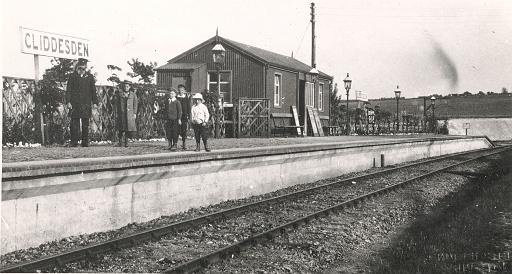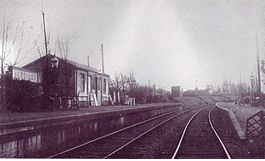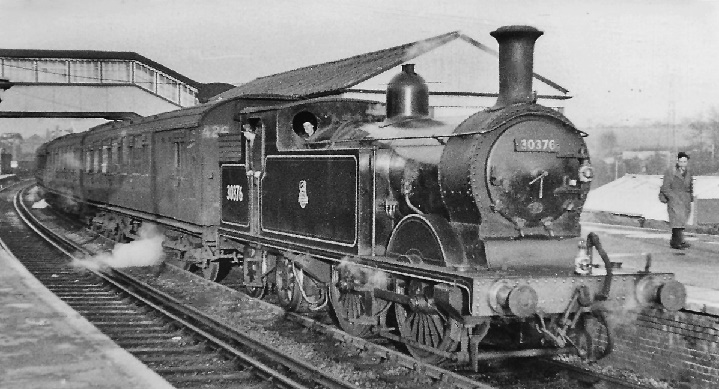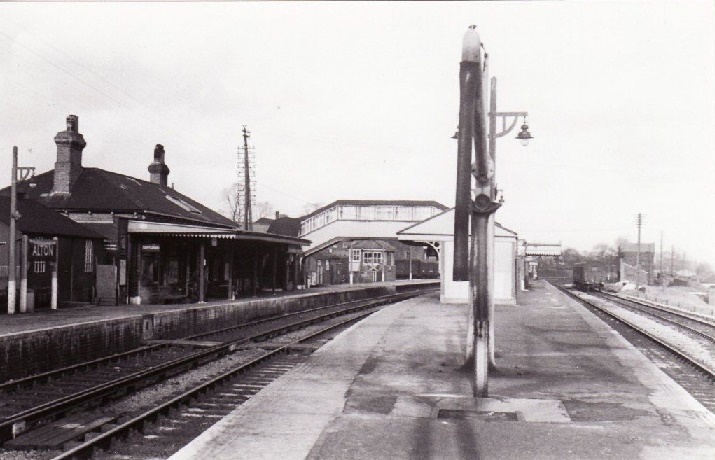Click here for other railways.
Basingstoke & Alton Light RailwayOpened in 1901 as the first Light Railway in the country. Closed in 1917 with the removal of much of the track to be used for the war in France but the line was relaid and re-opened in 1924 largely because of pressure from local landowners, farmers and agricultural workers. Passenger services ended in 1932 but a goods service from Basingstoke as far as Bentworth and Lasham continued until 1936. The whole of the line was then dismantled, except for short stubs at either end - from Basingstoke to Thornycroft's factory, and from Butts Junction to Alton Park. These short stretches were used for goods traffic until 1967.
After failing to reach Southampton by way of the Didcot, Newbury and Southampton line, the GWR turned its focus on Portsmouth, for there was money to be earned* from that port. In 1895, the " Portsmouth, Basingstoke and Godalming Railway" announced its intention to construct a line from Basingstoke to Portsmouth via Alton and the MeonValley. As was the custom with previous lines, whilst the PB&GR would have been a separate company, the GWR stood behind it. Faced with this threat to its revenue, the L&SWR was fortunate to be able to take advantage of a new law passed in 1896 - The Light Railways Act. Under this legislation, companies building railways were able to apply lower than normal standards of construction to railways expected to be lightly used. The quid pro quo was that only lighter trains would be allowed to use the lines when built, and then only at reduced speeds. The great virtue in the Light Railways Act was that it allowed small railways to be built cheaply, and thus helped the economic case for their construction (which was by the 1890's one of the criteria considered by Parliament when deciding whether or not a line should be built). The projected cost of the Basingstoke to Alton section of the PB&GR was some £200,000. Thanks to the new Act, the L&SWR was able to propose a light railway as an alternative, at a quarter of the cost. The L&SWR's proposal was accepted, thus keeping the GWR out of Portsmouth, albeit at the cost of having to construct a line which they hadn't really wanted. The L&SWR had made such haste to see off the GWR that the Basingstoke and Alton Light Railway was the first one authorised under the new Act - on 9 December 1897.
As opened, it ran from Basingstoke to Butts Junction, just west of Alton, and had three intermediate stations, Cliddesden, Herriard and Bentworth & Lasham. The stations were not particularly close to their alleged communities . Whilst there were sidings at all stations, Herriard was the only station provided with two platforms. The route was otherwise single track, except where it widened to two for a few yards approaching Butts Junction. As a light railway, the line had an overall speed limit of 25 miles per hour. The journey took typically 45 minutes end to end.
The railway was used for the filming of the 1929 film The Wrecker and the 1937 film Oh, Mr Porter! which features Cliddesden Station as the fictional Buggleskelly. Unused footage from The Wrecker was used in the 1936 film The Seven Sinners.
Basingstoke & Alton Light Railway route.
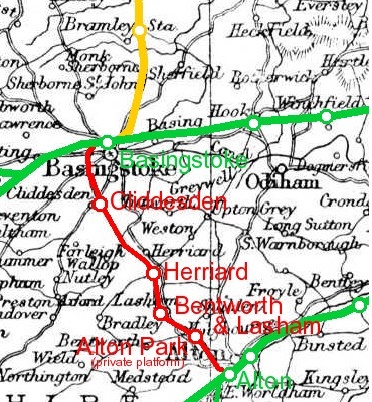
Photos and videos
Photos of Cliddesden Station
Google images
'Oh Mr Porter' full movie
A contractor's train with locomotive "Henry Appleby" together with a number of local dignitaries shortly before opening in 1901.
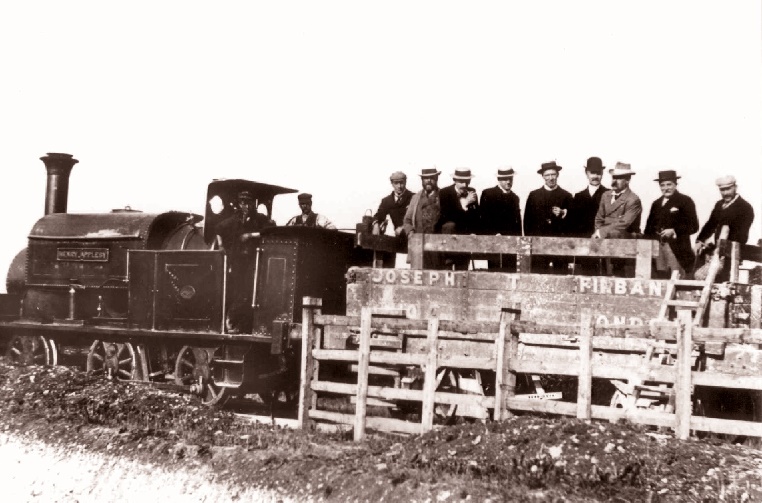
Steam railmotor purchased for operating the Basingstoke & Alton Light Railway in 1904.

Basingstoke Station
Opened by the London and South Western Railway as a temporary terminus when its line to Southampton reached Basingstoke from London. It became a through station in 1839 when a small station was built which was replaced by one designed by Sir William Tite about 1850 .
A second railway reached Basingstoke in 1848 when the broad gauge Great Western branch opened from Reading with a station with an overall roof being built north of the LSWR station. It was not possible for trains to pass from one railway to the other due to the difference in gauge and a Transfer shed was built where goods could be transferred across a platform from a broad gauge wagon to a standard gauge one. This system only lasted until 1856 when the GWR laid a standard gauge rail on its broad gauge track. The broad gauge rail was removed in 1869. Tite’s station was enlarged, the two LSWR tracks were increased to four and the Chapel Street Bridge enlarged in 1875 and again in 1903. At this time the third LSWR station was built in a Neo-Tudor style in rich red brick to the south, town side, of the running lines and at a lower level with a subway giving access to the platforms. In 1932 trains from Reading ran into the main station and the GWR building was demolished. Both railways had large goods sheds and extensive goods sidings but these have mostly been demolished and the ground used for large car parks.
Basingstoke station was the terminus of the Basingstoke and Alton Light Railway, opened in 1901 to prevent the GWR from building a line on this route towards Portsmouth. The line was never profitable. During the First World War some of the track was sold off. After the war, Southern Railway had the line reopened, but it was closed finally in 1932.
Basingstoke Station map late 1800s.
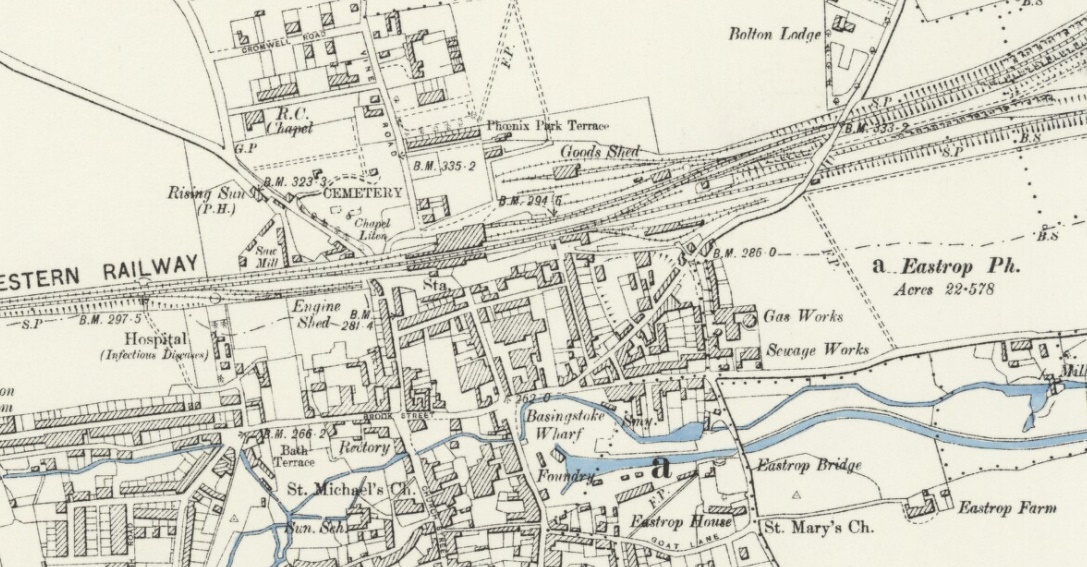
Basingstoke Station map mid 1900s.
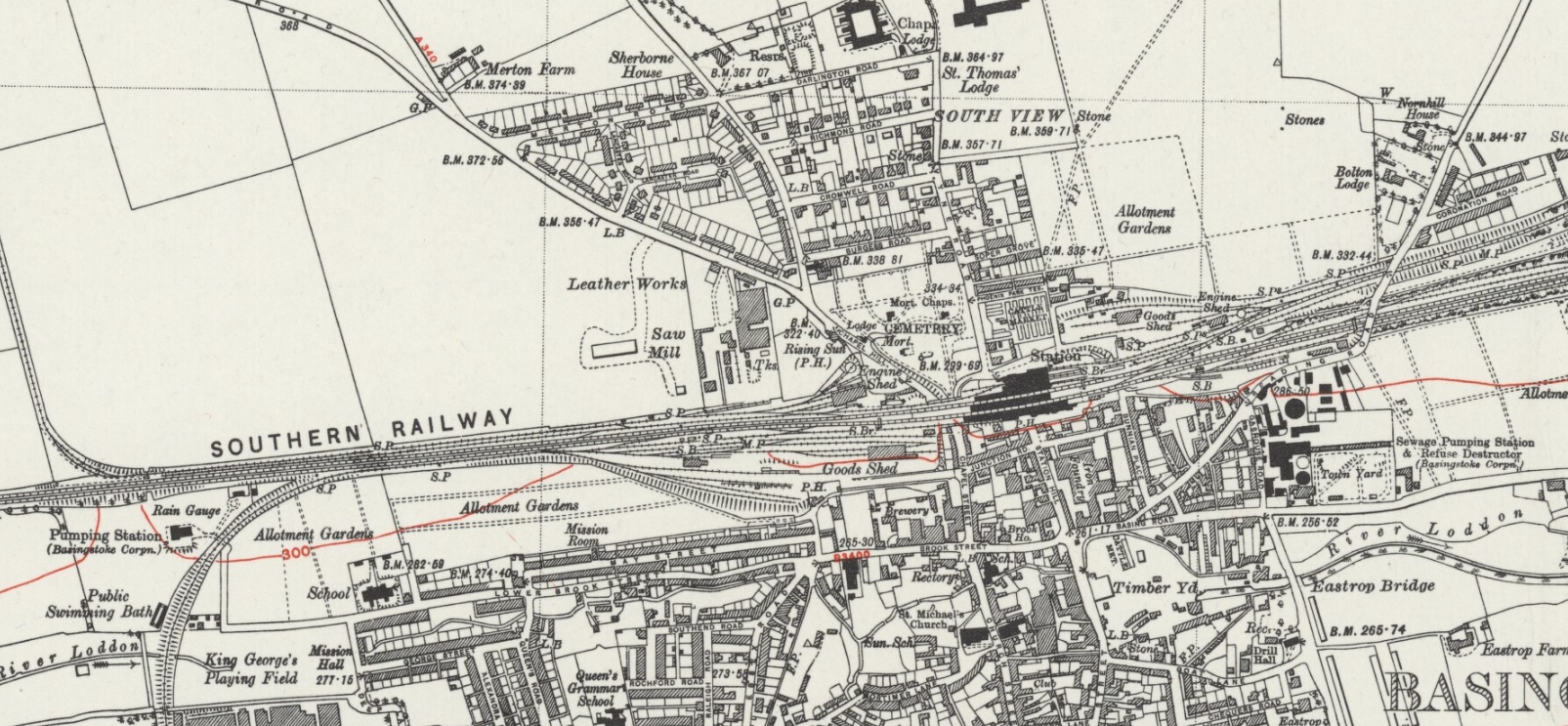
Basingstoke Station mid 1900s.
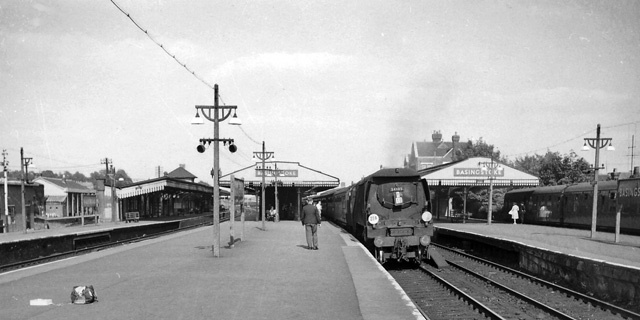
Basingstoke Junction
Where the Basingstoke & Alton Light Railway joined the main Southampton to London line.
Basingstoke Junction map early 1900s.
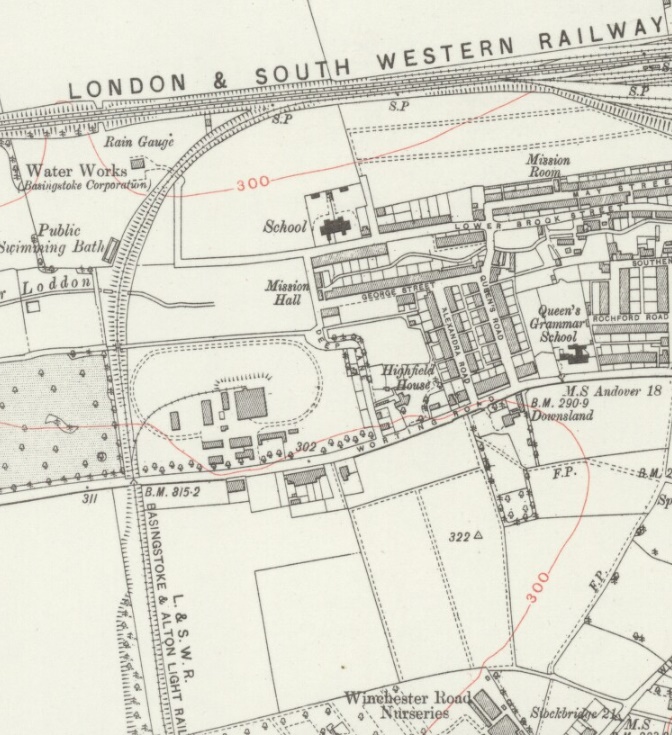
Thornycroft Motor Works
Thornycroft factory had it's own sidings..
Thornycroft Motor Works map early 1900s.
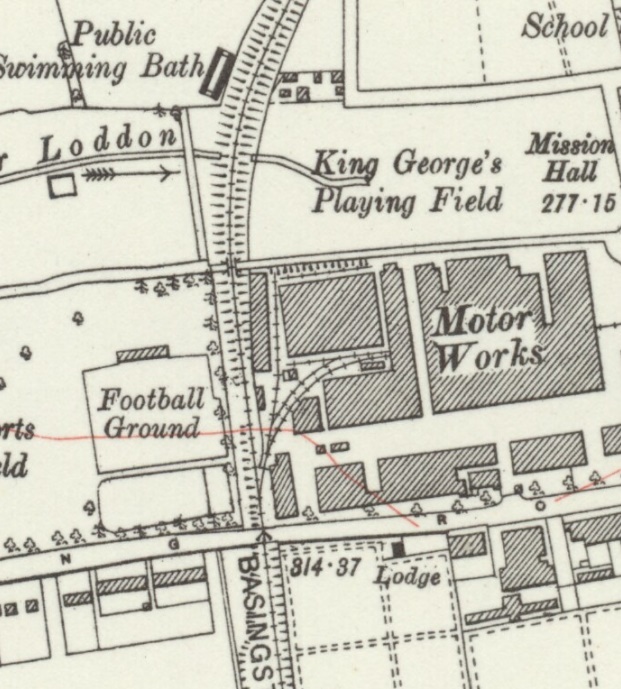
Thornycroft Motor Works early 1900s.
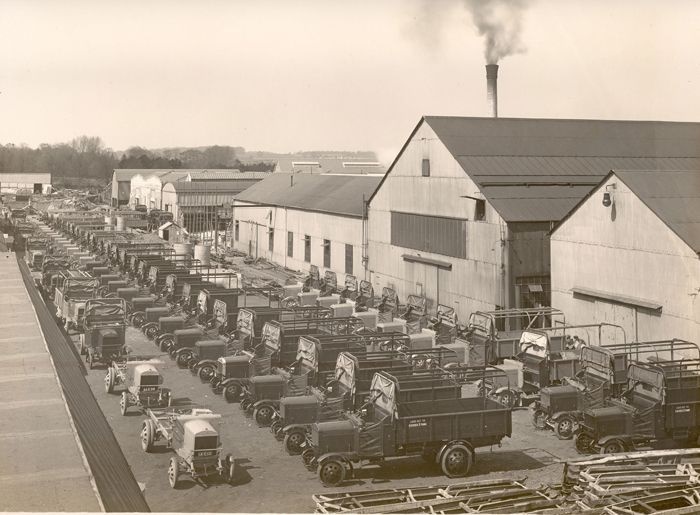
Thornycroft Motor Works early 1919.
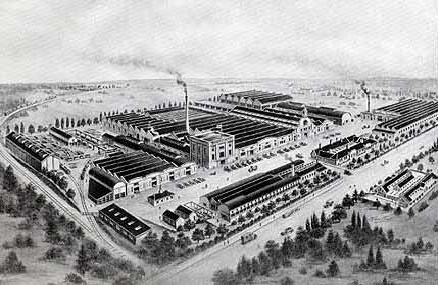
Thornycroft Motor Works mid 1960s.
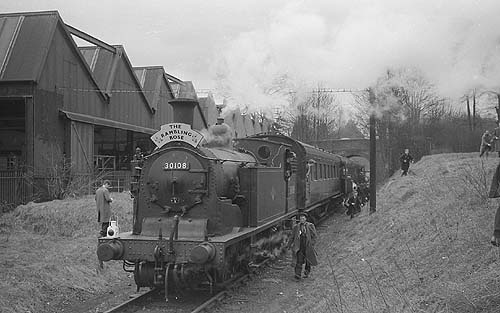
Cliddesden Station
Opened in 1901, closed 1917, re-opened in 1924 . Passenger services ended in 1932 and goods in 1936.
Cliddesden Station map early 1900s.
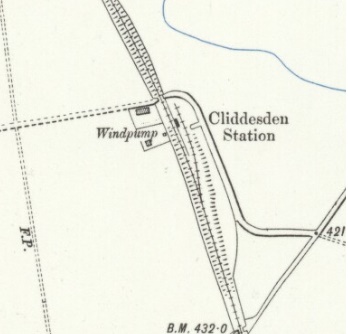
Cliddesden Station early 1900s.
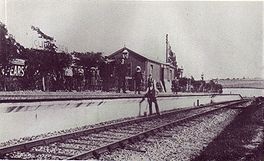
Herriard Station
Opened in 1901, closed 1917, re-opened in 1924 . Passenger services ended in 1932 and goods in 1936.
In 1928, a crash scene from the film The Wrecker was filmed at Herriard.
Herriard Station map early 1900s.
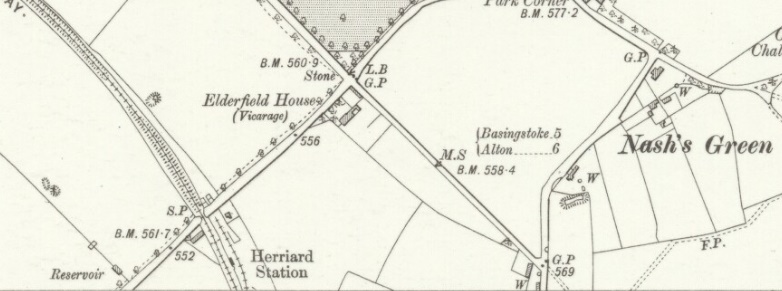
Bentworth and Lasham Station
Opened in 1901, closed 1917, re-opened in 1924 . Passenger services ended in 1932 and goods in 1936.
Bentworth and Lasham map early 1900s.
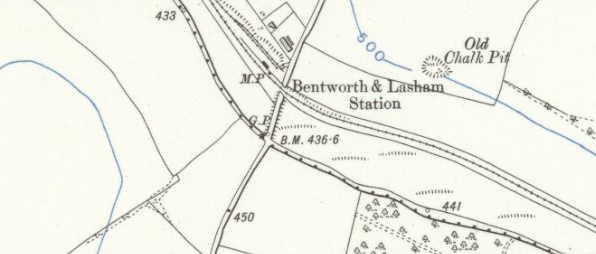
Bentworth and Lasham Station early 1900s.
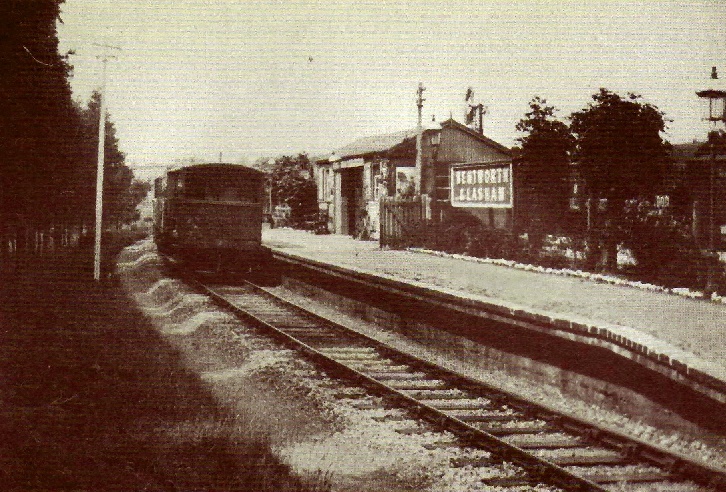
Bentworth and Lasham Station after closure.
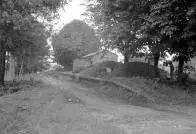
Treloar's Hospital Station
The station was built by the London and South Western Railway in 1910 on the route of the Basingstoke and Alton Light Railway. It was opened around 1918, and was a private station, used by parties of children visiting Lord Mayor Treloar's Cripples Home, which had opened in 1908 The platform was 200 feet long. The station was known under three names: Cripples' Home Siding (until at least 1929); Alton Park and Treloar's Hospital Platform. The station was closed in 1939 and the platform/line was used for goods traffic until 1967.
Treloar's Hospital map early 1900s.
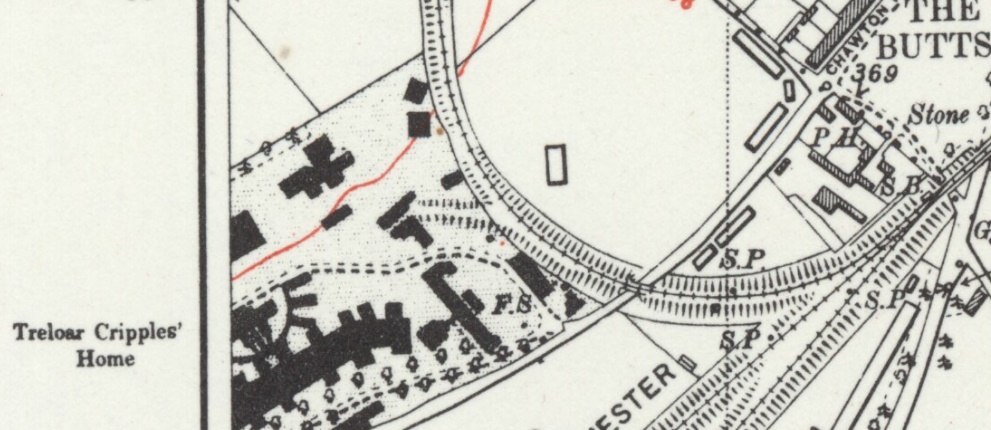
Treloar's Hospital Station early 1900s.
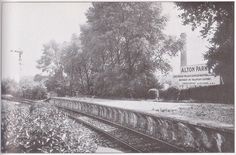
Treloar's Hospital Station 1960.
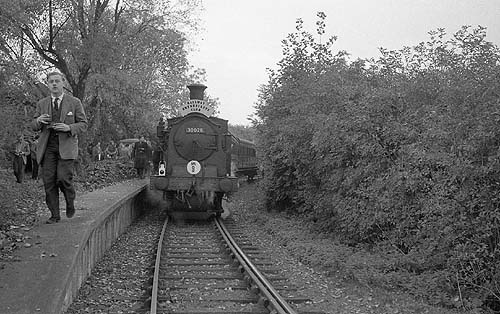
Butts Junction
Butts Junction was a railway junction where the Basingstoke and Alton Light Railway, and the Meon Valley Railway diverged from the Mid-Hants line from Alton to Winchester.
Butts Junction map early 1900s.
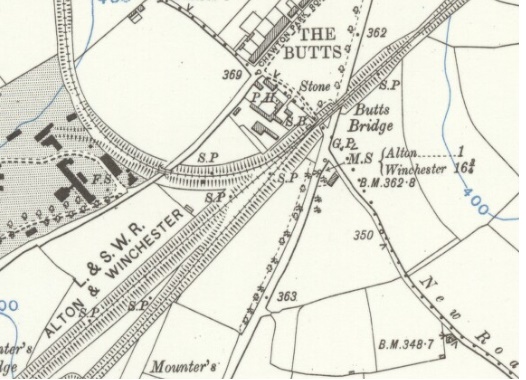
Butts Junction early 1900s and today.
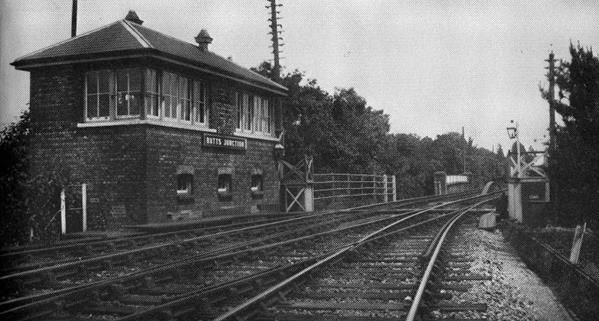
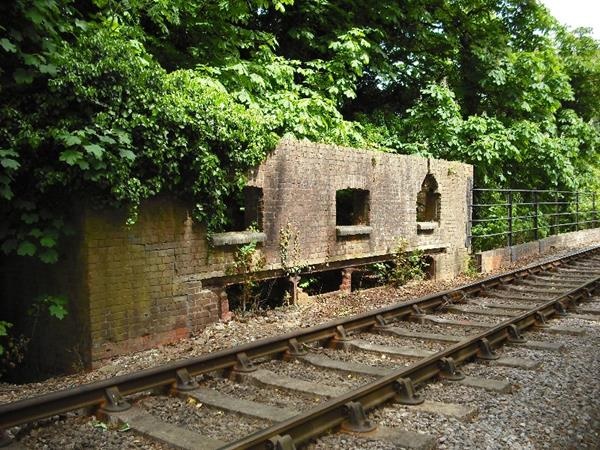
Alton Station
The first station opened by the London and South Western Railway in 1852 was sited on what is now the station car park. It closed when the present station opened in 1865.
The station is the terminus for two railway lines; the Alton Line which runs to Brookwood and onto London Waterloo and the Mid Hants Watercress Railway, which runs to Alresford. The latter once ran through to Winchester but was closed to passengers in 1973. It reopened as a heritage line in 1985. Two other routes (both now closed) also served the station – the Meon Valley line to Fareham and the Basingstoke and Alton Light Railway.
The inter-war period included the electrification of the London line as far as Alton in 1937, making it a terminus of the electric train service to London. Meanwhile, following the second closure of the Basingstoke & Alton Light Railway in 1936/37, Butts Junction was rationalised. Trains going to Winchester used the right-hand track in both directions, and trains going along the Meon Valley line to Fareham used the left-hand track in both directions. This removed the need for the signal box and points at Butts Junction, effectively making the double track section into two bi-directional single lines which diverged from the platforms at the southern end of Alton station.
Alton Station map early 1900s.
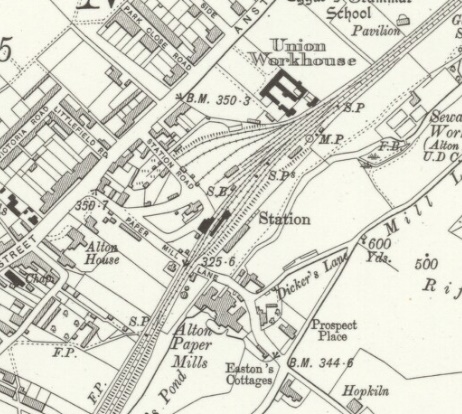
References:
Wikipedia - Alton Station
Wikipedia - Treloar's Hospital Platform railway station
Wikipedia - Basingstoke Railway Station
Wikipedia - Basingstoke and Alton Light Railway
A History of the Railways around Basingstoke
John Speller's Web Pages
Old Maps Online
